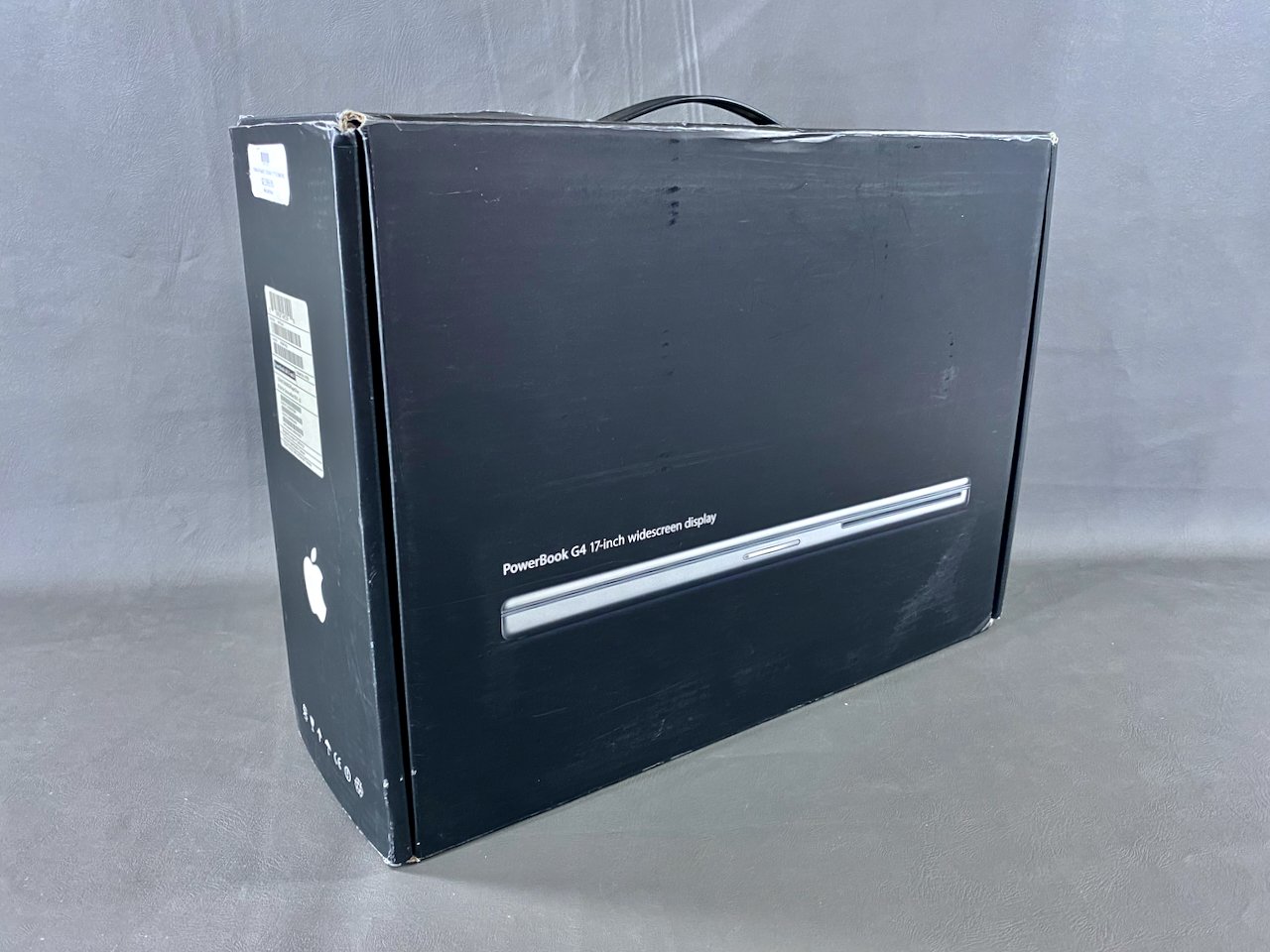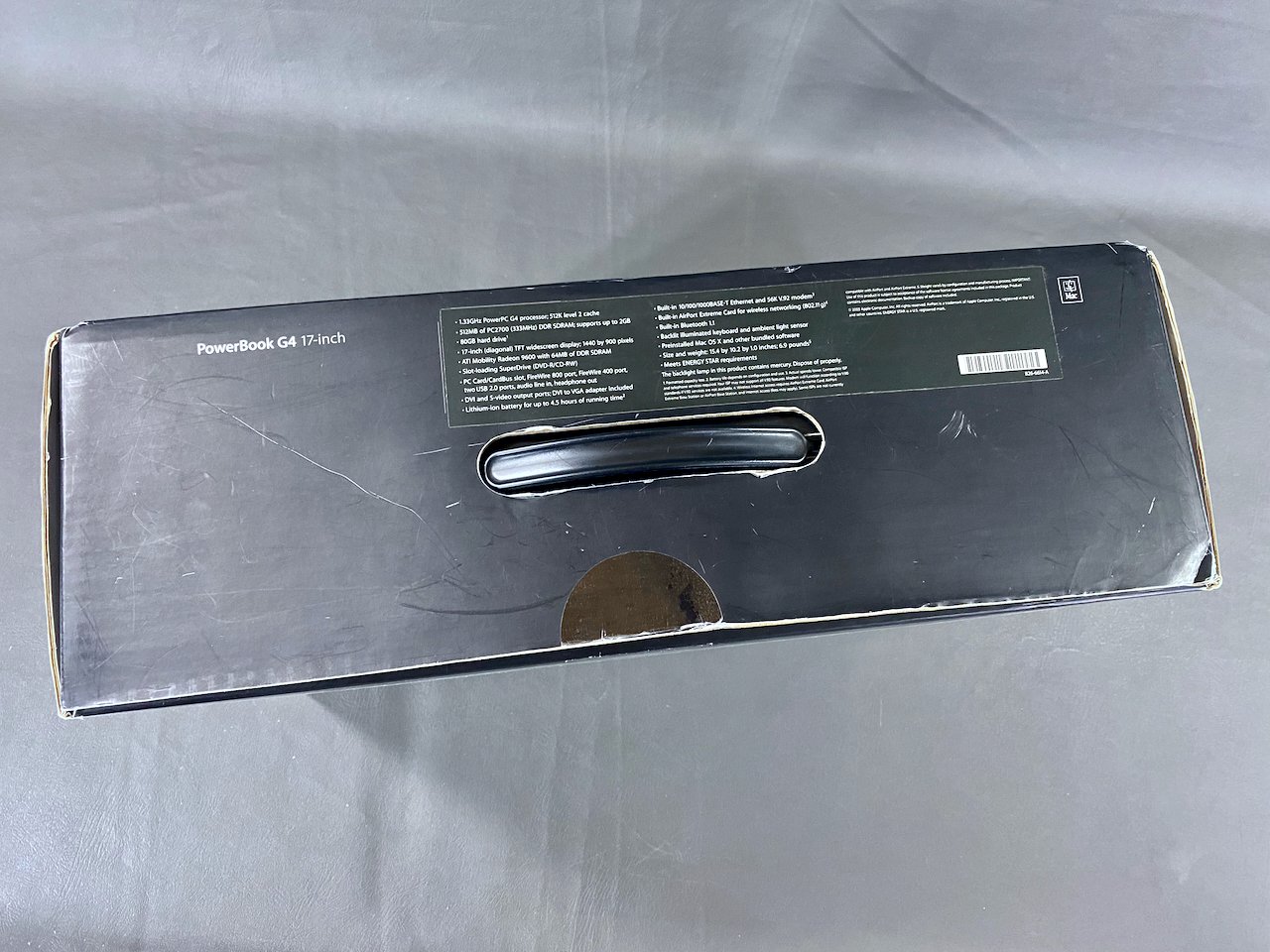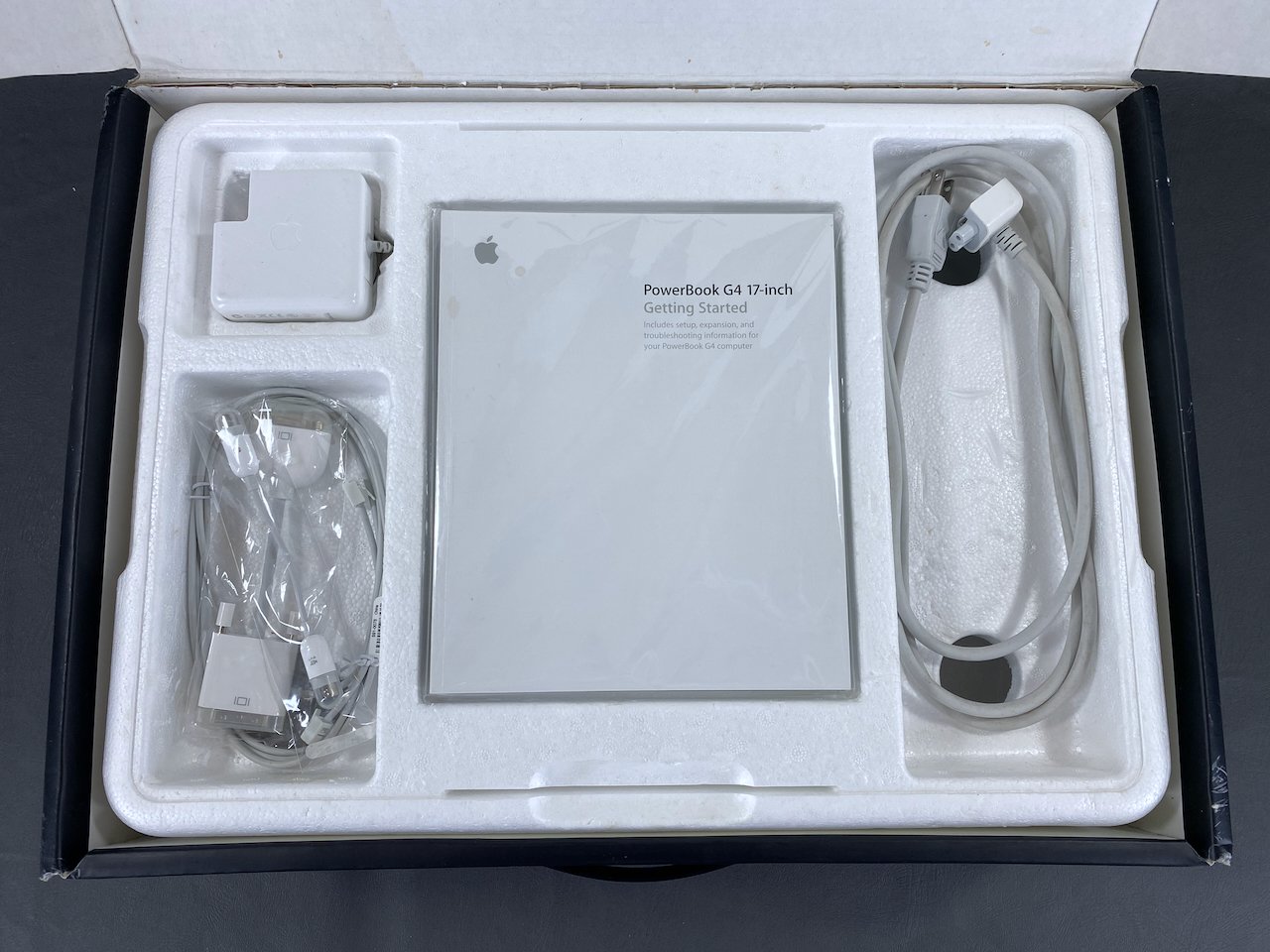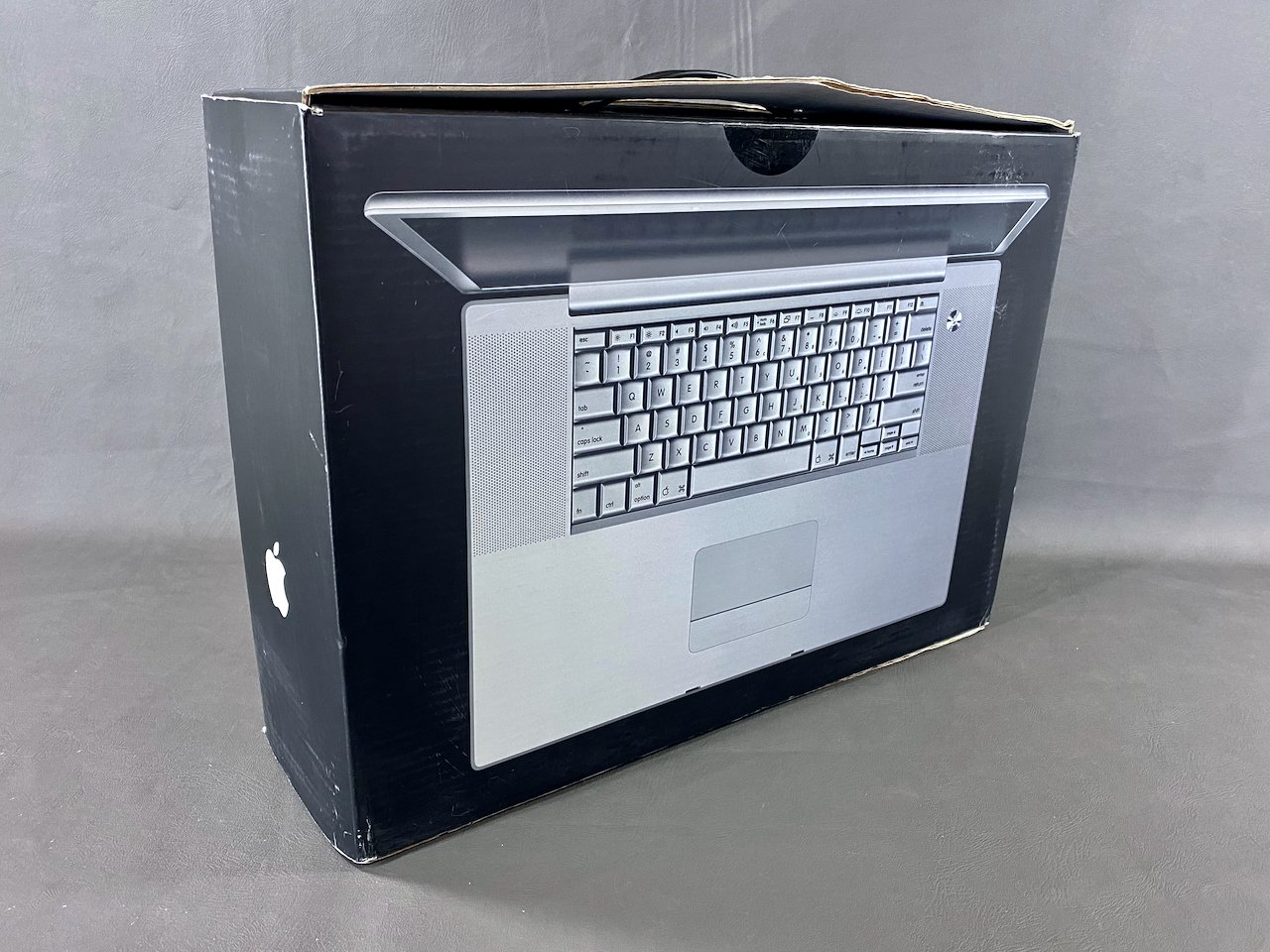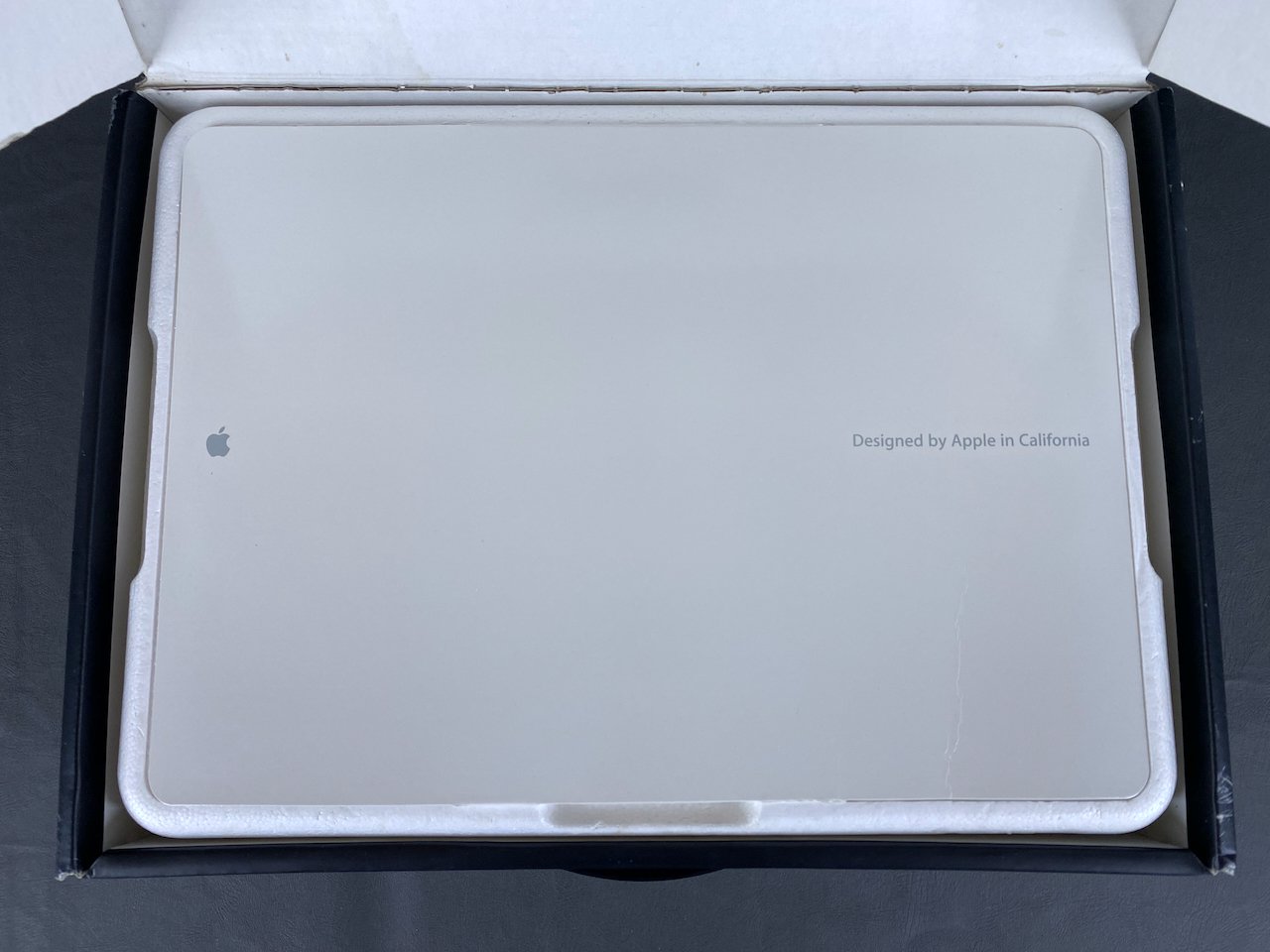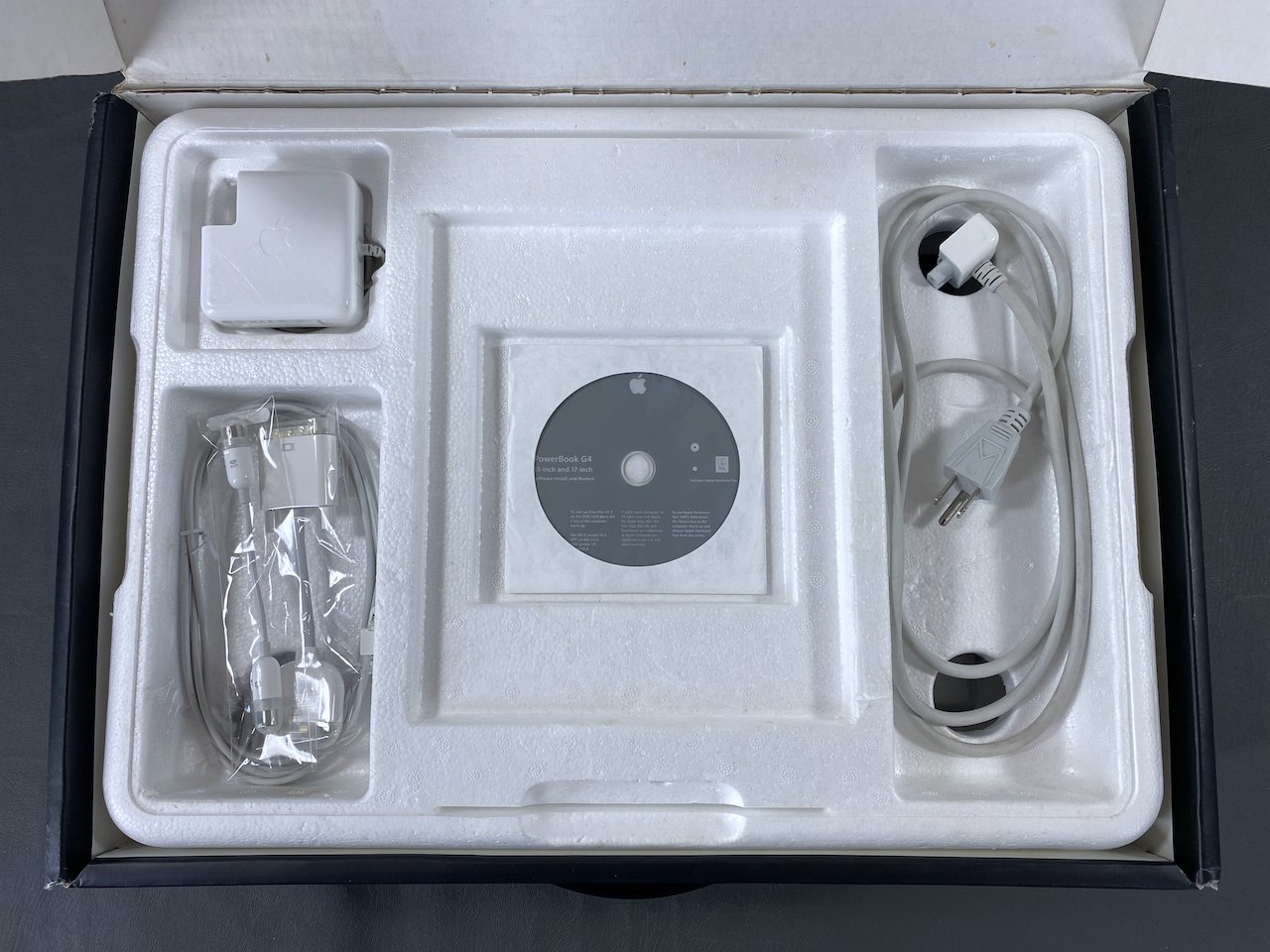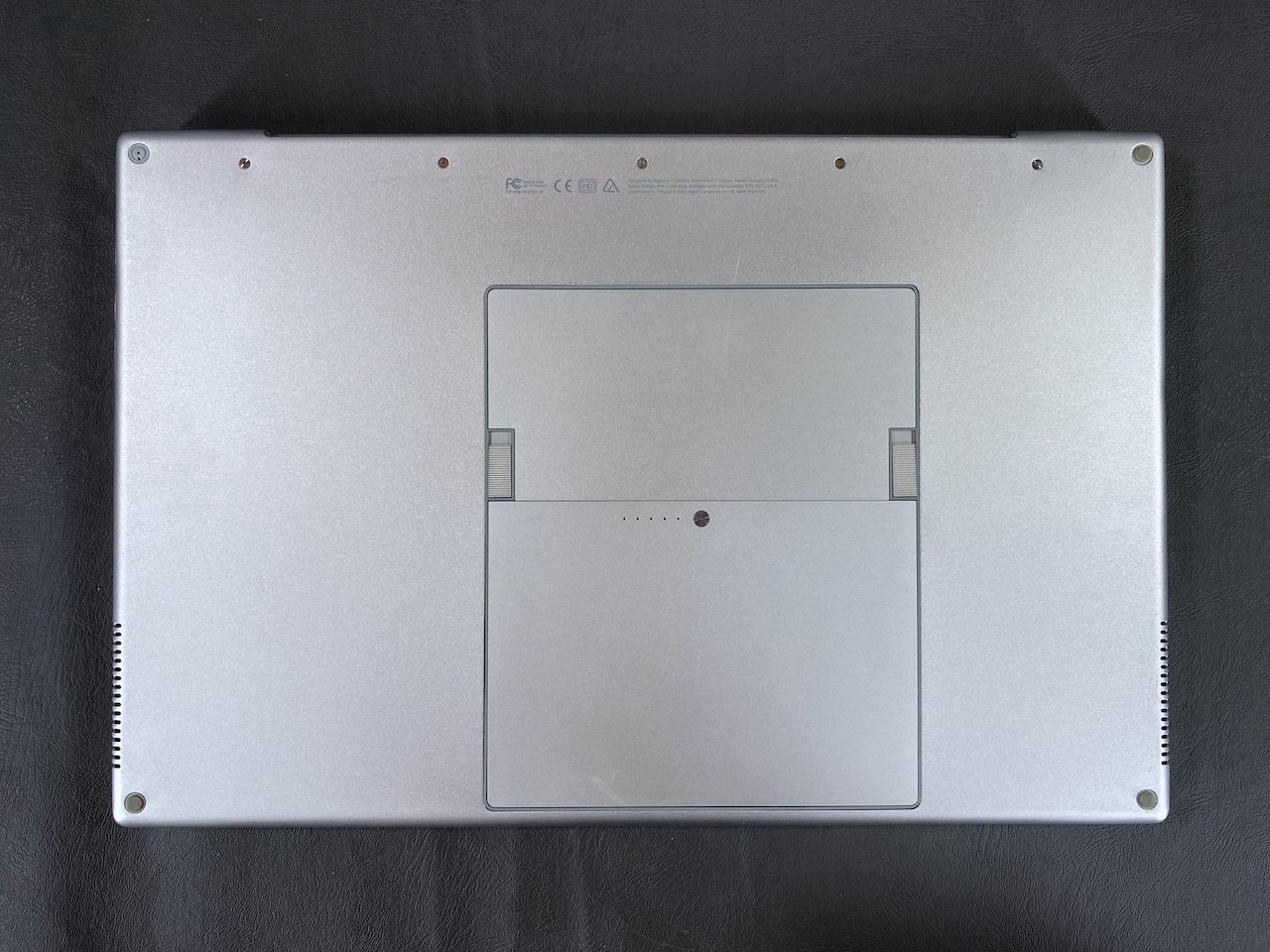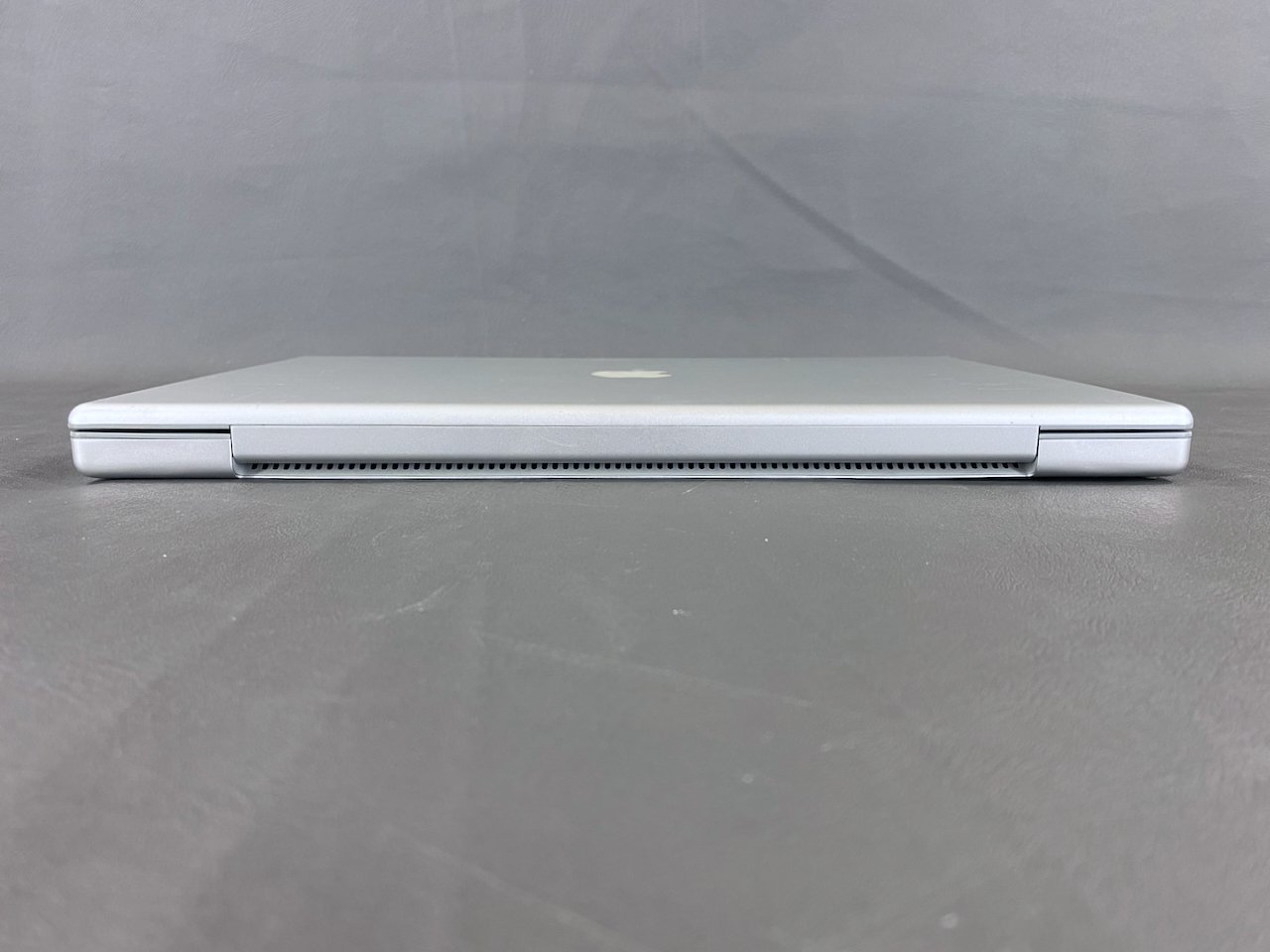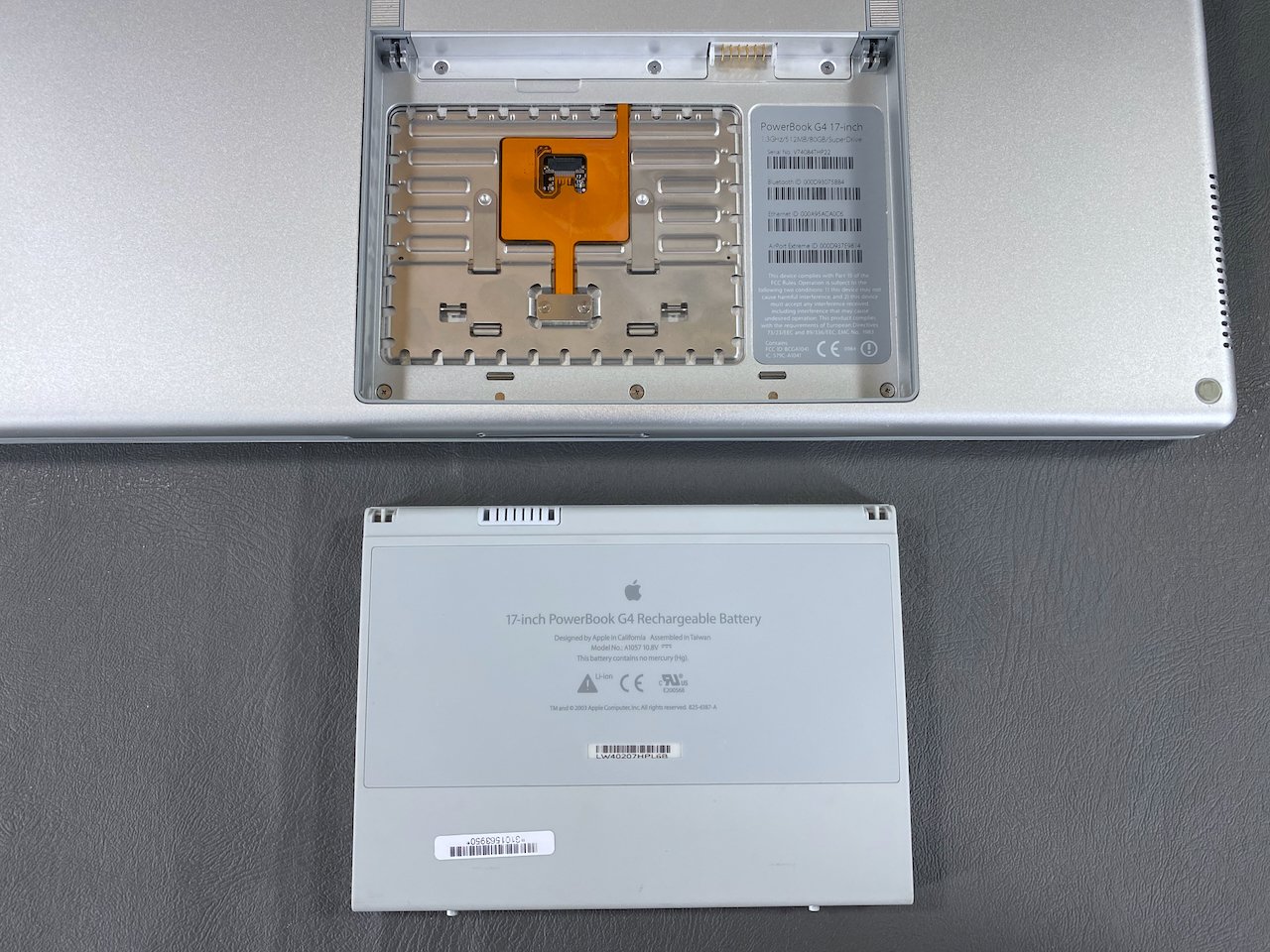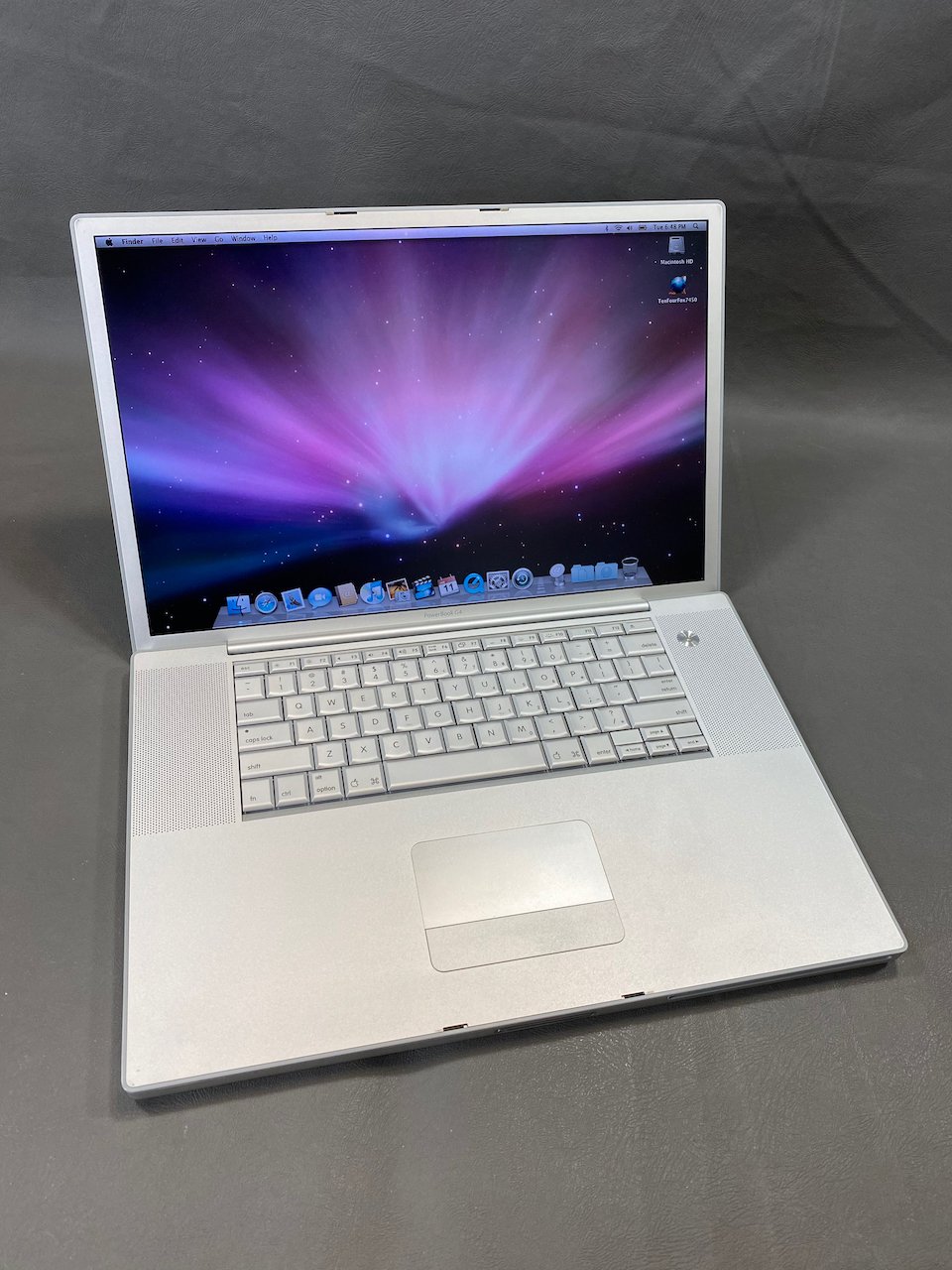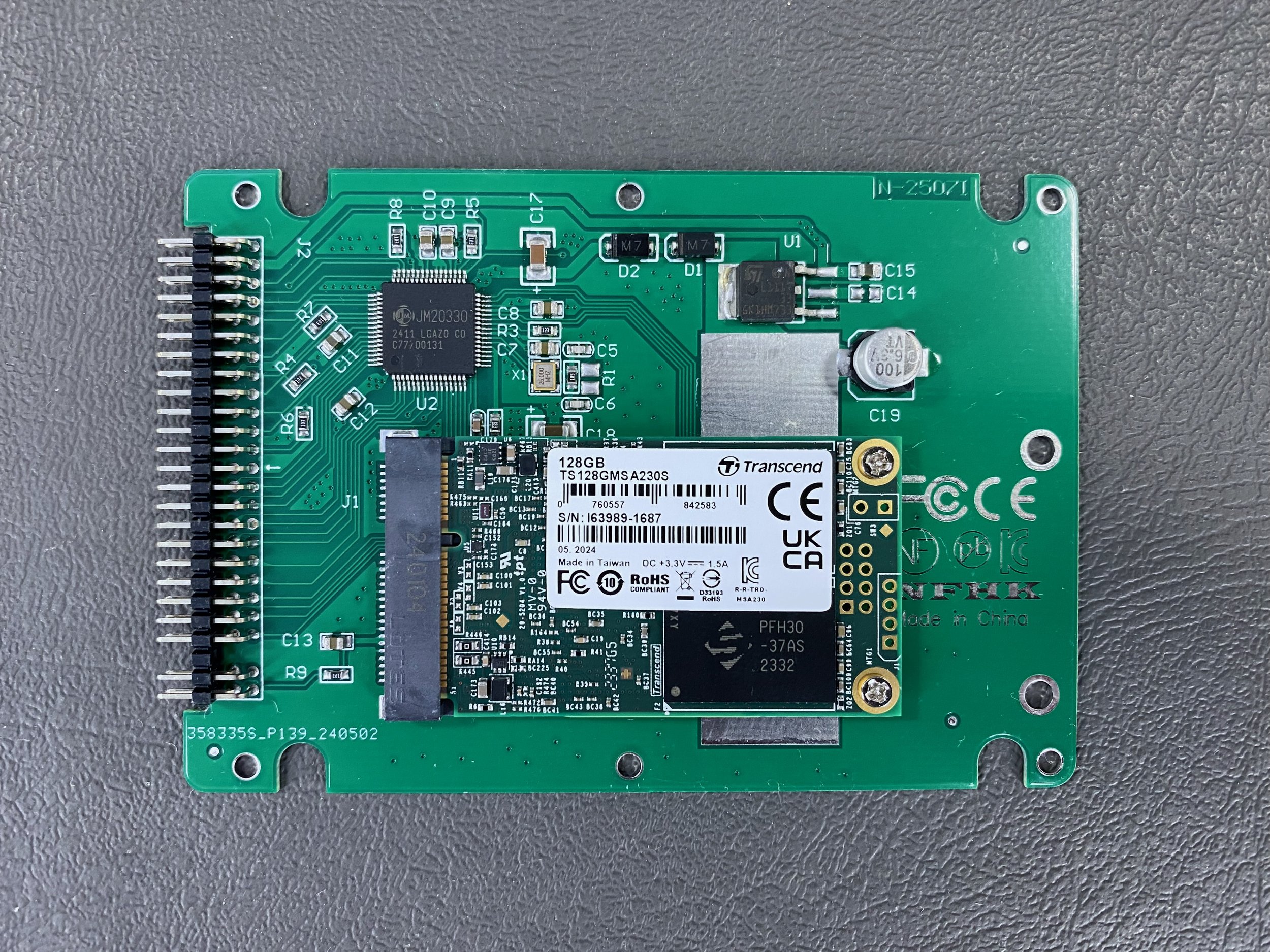PowerBook G4 - 17”
(Aluminum)
History
Introduced: January 7, 2003
Discontinued: April 24, 2006
Original Retail Price: $2,599 (price on original invoice)
Model #: A1052
Tech Specs
Display: 17” TFT LCD
Processor: 1.33 GHz PowerPC G4
RAM: 1 GB (upgraded)
Hard Drive: 128 GB SSD (upgraded)
Optical Drive: SuperDrive
OS: 10.3
Condition & Notes
This unit is in excellent condition, and was purchased from the original owner who used it for her small business. It is complete with all the original packaging, power adapter, modem cable, DVI-to-VGA adapter, S-video-to-composite adapter, iLife packet, software CDs, and documentation.
In 2024 I replaced the (failed) original 80 GB hard drive with a 128 GB mSATA SSD. HDD to SSD conversion is a common technique used in vintage computer preservation, as the original hard drives are prone to failure due to age. This upgrade also makes the computer quieter, faster, and more reliable. Scroll to the bottom of the page for more on this.
The battery does hold a slight charge, but the machine must be plugged in to operate for any extended length of time.
It is in fully working order and currently has OS X 10.3 installed.
Model Identifier
This particular machine is the 1.33 GHz model introduced in late 2003. It features a backlit keyboard with ambient light sensing, which was a considerable novelty back in 2003.
Packaging
PowerBook
Shown here before I installed the SSD and factory-reset the machine to OS X 10.3.
Accessories
Power cable, modem cable, DVI-to-VGA adapter, S-video-to-composite adapter, iLife packet, software CDs, and documentation.
User’s guide, warranty info, software license agreement, AppleCare guide, OS X Panther documentation, software coupons, product registration info, information transfer guide, AirPort Extreme and Bluetooth info, iLife documentation, software CDs, and even the original Apple stickers!
System Specs
mSATA SSD Installation
This upgrade makes the computer quieter, faster, and more reliable. I chose to install a 128 GB mSATA SSD using an mSATA-to-IDE 2.5” adapter housing.
The SSD slots directly in to where the original HDD was installed, using the OEM IDE cable harness and installation brackets.


